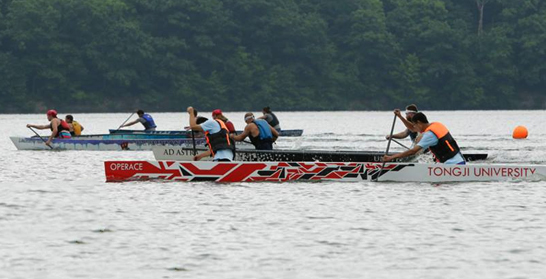Concrete canoes are usually created for engineering competitions, where the goal is to make the seemingly unfloatable float. According to Archimedes’ principle, boats and ships float because the weight of the water they displace is equal to the weight of the vessel. Many boats, however, are designed and built with materials that have a greater density than water, which will cause the boat to sink if it fills with water. By contrast, concrete canoes are constructed with porous aggregates such as macrolite and microsphere, which are less dense than water.
At Del Zotto Products of Florida, we sell forms for precast, dry cast and ready-mix concrete. As a result, we recognize that concrete is the most versatile building material on the planet. Want proof? Keep reading to learn more about how it can be used to build canoes for competitions.
The Execution of Concrete Canoes
Today, most competitive concrete canoes have concrete mix designs that are less dense than water. In order to qualify for the competitions, these vessels must resurface after being submerged—proving that they are truly less dense than water. However, because some international teams still use concrete mixes that are denser than water, teams in the U.S. are allowed to insert concrete-covered, non-structural foam pieces in their canoe to help it float after being pushed underwater.
In accordance with competition guidelines, all participating teams must design their concrete canoes from scratch. First, they create the shape of the hull with a computer design program specifically made for ships and other watercraft. Once the design is complete, a construction team produces a mold in the shape of the canoe. Next, the concrete is poured and left to cure. Once the canoe is set, the team sands the canoe and finishes the exterior.
Competitions for Concrete Canoes
Competitions for concrete canoes began in the U.S. in the 1960s, when a small number of American Society of Civil Engineers (ACSE) student chapters began holding intramural concrete canoe races. In 1971, the University of Illinois hosted the first intercollegiate race against Purdue, and the trend caught on. Since then, students’ efforts to combine engineering excellence and hydrodynamic design to construct water-worthy canoes have culminated in an advanced form of concrete construction and racing technique known as America’s Cup of Civil Engineering.
Each year, in mid-June, the ASCE’s National Concrete Canoe Competition (NCCC) provides students the opportunity to utilize their engineering knowledge while gaining hands-on experience with team-building and project management skills. The events of this competition not only prepare students for a successful career, but also demonstrate the versatility and durability of concrete as a building material. The winners of the competition are determined by compiling the team’s total number of points from the academic and race portions of the competition. The winning team’s undergraduate civil engineering program receives scholarships totaling $9,000.
Concrete canoes are a triumph of concrete and modern civil engineering. They take an impressive amount of skill and knowledge to create and execute. If you’re interested in seeing concrete canoes in action, consider taking a trip to this year’s National Concrete Canoe Competition.
Has this article inspired you to make something with concrete? Del Zotto Products wants to help. We have the forms and equipment you need to complete your next construction project. For more information, you can contact us or reach out via social media.


